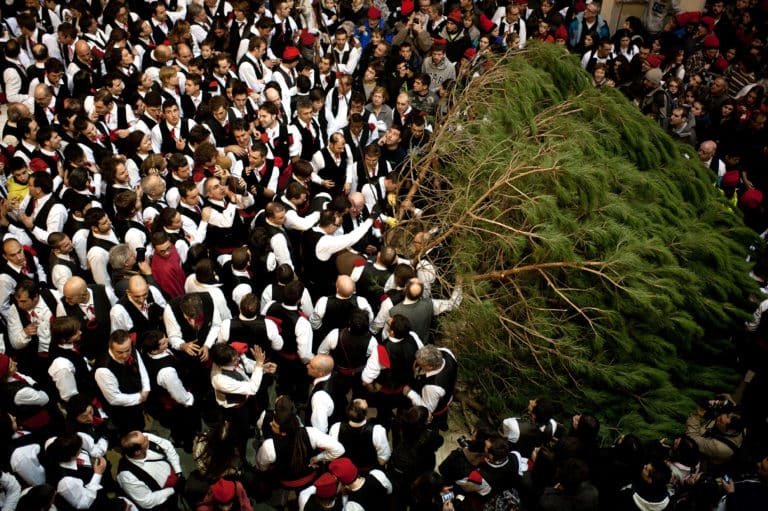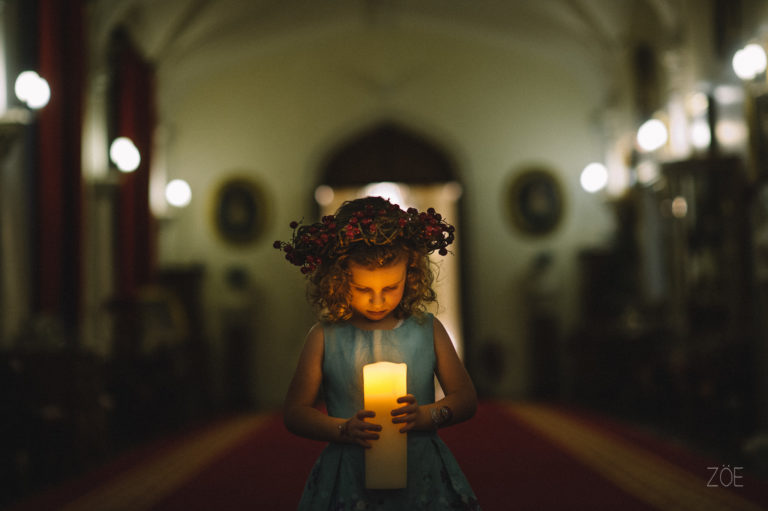
Image by David Ramos/Getty Images, © All Rights Reserved.
Finding Ancient (Pagan) Meaning in the Darkness of Advent
Sleepers….awake!
— traditional Advent hymn; cantata by J.S. Bach
I marvel at the way ancient “pagan” traditions, pre-dating today’s Christian holidays, can bring deeper, insightful meaning into our religious holiday traditions. I like to call this the “pagan effect.”
Counterintuitive as it may be for those of a particularly rigid faith, I find this effect to be an entirely positive phenomenon. Especially so in the season of Advent.
Before I had any real awareness of Advent’s ancient connection to the Winter Solstice, the Advent season had been for me the designated four-week, headlong rush to Christmas that it is for many people today — a crazy-busy season of fitting in the additional to-do lists of buying, wrapping, and sending gifts; decorating the house; sending cards; and on and on.
In those days, “December” was completely lost on me. In fact, the only natural sense of December I would experience was that it always felt ridiculously dark outside. This darkness was incongruent and disconcerting, an intrusive distraction. I made sure to keep it at arm’s length, just out of reach, lest a foreboding, quiet emptiness creep in with it and jeopardize the utter but necessary mayhem and frivolity of my Christmas preparations.
But when I began to study the ancient Celtic tradition, and its keen awareness of humanity’s deep, inner connections with the rhythms of the natural world, I began to slowly realize how beautifully aligned the symbolism of the Advent season is to the imagery of the natural season leading to the Winter Solstice — the play of light and dark, the waiting, even a kind of deep and prophetic longing.
On her luminous site A Design So Vast, writer Lindsey Mead speaks of her own inner longing and “nascent light” in these dark days. She offers a meditation by author Meg Casey that captures the hushed beauty of the light in the dark of December:
“December is a holy month. Maybe it is the dark, silky silence that descends so early that speaks to me of reverence. Maybe it is the promise that December holds — that no matter how dark, how cold, how empty it can get, the light is coming back. Something always shifts in me when December arrives — I embrace the darkness, and am eager for the coming solstice when the whole world is still and holds its breath, waiting to be reborn again.”
Before integrating a more earthy, pagan gnosis into my experience of this season, I hadn’t known the “silky silence” of December’s darkness. I had been asleep to the movement of the whole world toward stillness and turning. Practicing what I’m realizing now was a more of a pseudo-Advent, I had been dismissing as irrelevant and bothersome any complexities or tensions this in-between time might be offering.
But the pagans and their inner congruence with the natural order shook me awake — awake, and tumbling into a dark and holy Advent, full of paradox and promise for all of us.
For the word “advent” literally means “the coming,” and, in this sense, these weeks in December are indeed a time of advent for all of us — whether we consider ourselves religious or not. The light is coming. All of Creation — and we — wait together for that coming.
What a not-to-be-missed treasure the natural season of Advent can be then, when the nascent light inside each of us can turn to, and answer, the promises of light surrounding us everywhere in the December dark: the whisper of candlelight from darkened windows, the blue-black light of dusk against the silhouetted trees of winter.
This is Advent — when as sleepers we awaken to our own light of love deep within us, waiting to be reborn again in the dark stables of our own souls.


Share your reflection